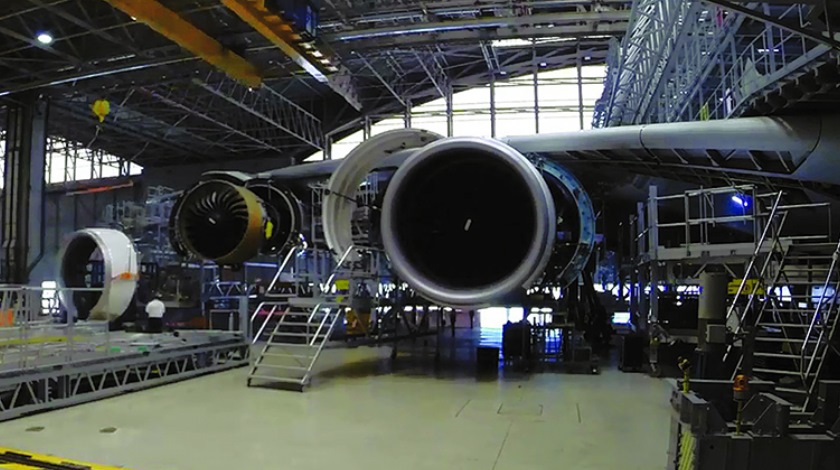“Blockchain is one of the most discussed and intriguing technologies out there today,” observes Bas de Vos, director of IFS Labs at IFS. “It is a huge, global distributed ledger or database running on many devices and open to anyone within the blockchain. Its purpose is to ensure a 100% secure, verifiable and traceable database protocol.”
The IFS researcher thinks blockchain has a huge, untapped market in managing commercial aircraft assets. Of the two to three million parts on a commercial aircraft, it is crucial to know the provenance and maintenance history of many.
Yet participants in asset lifecycles, manufacturers, transporters, maintainers and operators, have disparate systems for managing assets. “Often, these records are incomplete or non-digitized, and communication is often conducted on paper or even verbally,” de Vos says. “Lack of standardization leads to limited traceability, and the cost for non-compliance can be high.”
But suppose all participants submitted transcripts of transactions into a purpose-specific, distributed ledger, like blockchain, which only authorized participants would have access to? The manufacturer would initially start the blockchain for the asset and each participant would add the relevant blocks to it. “The distributor would let the chain’s participants know that the asset was transported from point A to point B, while the operator would register the number of flight hours that the asset has undergone,” de Vos explains.
The submitted transcripts could be any pieces of digital information, either a complete copy of the original transaction or parts of it, which the transaction owner sees fit to share among the participants within blockchain. “These transcripts are presented as a digital copy of the transaction in the blockchain, for example a work order, maintenance order, shipping movement, and so forth,” de Vos says. The digital copy would be produced in each firm’s underlying business application, either IFS Applications or another enterprise asset management or resource planning system.
De Vos argues using blockchain in this manner would yield a 100% verifiable, traceable and trustworthy history of asset lifecycles in real-time. Yet each individual participant in the chain would retain the features and benefits its own business applications to run its business.
He ticks off additional benefits: improved data quality, minimal manual data entry, a single, traceable record of serial numbers, complete and more accurate maintenance histories, increased trust among participants and reduced costs.
To make the approach practical technology providers must work with regulators, airlines, MROs, logistic partners and software vendors. “There are still several challenges to overcome,” de Vos says. “Technical performance needs to be considered, as latency of transactions and computing power could stand in the way of achieving consensus in a chain. Data ownership, privacy and security must also be addressed.”
If these challenges can be met, De Vos says it is likely that Blockchain would be adopted by organizations in a supply chain at a single point in time, or at multiple points in time if an organization’s asset structure and supply chain is vast. Since aviation assets last several decades, it makes sense to start traceability of existing assets at an agreed date when the distributed ledger can be supported by all relevant parties. “Organizations would of course benefit from complete traceability if a distributed ledger is in place when an asset enters a supply chain.”
De Vos thinks it would be best to eventually apply the approach to all parts. “If you brainstorm on the best ways to begin working with blockchain on a future asset, starting with OEM delivery might be the cleanest. But I envision blockchains to start as smaller and very purpose-specific as the technology today has serious scalability challenges. If an asset owner decides to move to the blockchain it would make more sense to have everything on-chain, as it would be much easier to trace the audit trail, that is prove provenance.”

